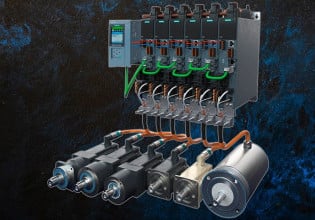IDS Imaging Upgrades 3D Vision Robots to Promote Flexible Manufacturing
What is this new method of 3D vision and how does iDS apply this to their latest vision system?
Vision systems and imaging devices have continued to make their way into industrial applications. Now, it's common to see inspection systems that use laser technology to scan chips on a conveyor belt, or thermal cameras mounted to specific process control applications that can detect leaks and spills. Vision systems can be a variety of components including cameras, lasers, drones, and even sensors. iDS is one of the latest companies to release a new vision system solution for the factory floor.
iDS is a global supplier of industrial cameras, with USB and GigE connectivity and visual sensor software. iDS offers both ready-to-use and customizable vision solutions, along with an SDK (software development kit) software solution. The SDK is offered for free and claims to be easy to use with many different programming languages.
3D Image Sensing
iDS has recently released a line of 3D cameras. The Ensenso S camera uses structured light to build a 3D map within the camera’s field of view. Essentially, a laser is used to create a high-density dot-matrix map. This map is then analyzed and determined where the high and low dots are based on the time each laser takes to return to the sensor.

The Ensenso S camera. Image used courtesy of iDS
This method of 3D vision produces a pixelated overview of the environment but is still usable for many different applications. There are other 3D cameras on the market that might offer higher resolution, but that better picture quality will require a larger footprint of the device and will require additional hardware. The Ensenso S uses a Sony 1.6 MP (megapixels) CMOS and has a working range of 0.5m - 3m. This makes the Ensenso S easy to implement in many situations.

The Ensenso S camera on a conveyor belt. Image used courtesy of iDS
The laser comes pre-calibrated and is internally cooled to maintain the required 835 nm wavelength. Maintaining that wavelength is crucial to determining accurate height. If the wavelength varies, the time required for the laser to return to the sensor, causing higher or lower peaks.
Automated Guided Vehicles
Flexible manufacturing is the idea of producing multiple different products on one assembly line. This principle is very difficult because as part geometry changes, the tooling needs to interface with the parts. A popular solution is to have sections of the assembly line only for certain part types. With this solution comes the problem of transporting the product to different assembly line sections and maintaining part tracking. This is where the automated guided vehicle (AGV) comes into play.
AGVs are becoming very popular on the factory floor and in the warehouse. When using an AGV, it is important that the vehicle can stop if obstructions are detected. Having a compact 3D vision system onboard can help reduce the risk of the vehicle hitting people or obstructions.
Robots are great at doing repetitive tasks with components that are always in the same place. When the application requires a robot to know how high a stack of boxes is on a pallet, the math can get quite completed. Adding a 3D vision system to a robot can determine depth within the robot program. With the Ensenso S being compact, adding the camera to the robot’s end-effector can be an easier task.

The Ensenso S in application. Image used courtesy of iDS
Height Inspection
Height inspection in industrial applications allows the camera or vision system to see a high-level overview of the process at hand. This gives the camera a high-level view of the application so it can make informed decisions.
Using contact inspection tools can be slow and have adverse effects on the product being inspected. Using a 2D vision system can provide an eloquent solution but may require the camera to be in the way of the operator. A 3D vision system allows for a smaller footprint of the machine. The Ensenso S utilizes artificial intelligence to produce an accurate 3D map of the area, which aims to ensure accurate measurements.
Have you used any 3D vision products like this before? Let us know in the comments below.






